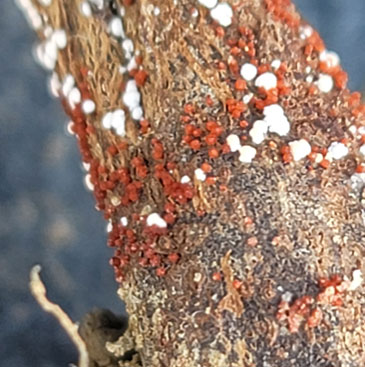Wageningen, The Netherlands
February 6, 2025
Soybean growers in the Midwest face a new challenge with Red Crown Rot (RCR), a yield-threatening disease that is on the rise. With no effective in-season treatments currently available, growers are facing increasing difficulties in managing this emerging issue.

Red Crown Rot, caused by the fungus Calonectria ilicicola, infects soybean seedlings within the first three weeks after germination. The disease spreads primarily through infected soil and crop residue, leading to yield losses ranging from 10% to 80% in severely affected fields, depending on environmental conditions.
Originally confirmed in U.S. peanut production in the 1960s, Red Crown Rot was first detected in soybean crops in the southern U.S. during the 1970s. The disease has now been identified in 11 soybean-producing states, including Illinois, Indiana, Iowa, Kentucky, Missouri and Ohio.
To help growers address this issue, CeraMax®, a biological seed treatment developed by Ceradis Crop Protection B.V., will be available in 2025 under a Section 2(ee) label for the suppression of Red Crown Rot in soybeans.
States where CeraMax Section 2(ee) labeling applies are Arkansas, Illinois, Indiana, Iowa, Kansas, Kentucky, Michigan, Minnesota, Missouri, Nebraska, North Dakota, Ohio, South Dakota, Tennessee, West Virginia, and Wisconsin.
“Red Crown Rot is emerging as a serious problem for soybean growers. Because no rescue treatments exist, proactive management is critical this season,” said Lon Kreger, North America Marketing and Sales Leader with Ceradis. “CeraMax provides a unique biological approach to the problem, offering growers an effective and proven tool to protect their crops before and after planting.”
How CeraMax Works
CeraMax contains the active ingredient Natamycin, a biological molecule produced by soil bacteria that prevents soil-borne fungal diseases from attacking plant roots.
By stimulating the defensive capabilities of the treated seed at planting and germination, CeraMax activates key defensive pathways before fungal infection occurs. This early activation allows the seed and plant to utilize its genetic resistance by “priming” plant physiology, enabling it to defend against disease before it takes hold.
“Growers need to be vigilant because Red Crown Rot is not a disease that can be eliminated once it establishes in a field,” Kreger emphasizes. “With no in-season foliar solutions available to reverse plant damage or yield loss, the best defense is a seed treatment like CeraMax.”
Recognizing the Signs of Red Crown Rot
One of the biggest challenges in managing Red Crown Rot is its frequent misdiagnosis as Sudden Death Syndrome (SDS).
Bob Joehl, Seed Protection Specialist (CPAg/CCA) for Direct Enterprises Inc., stresses the importance of recognizing the signs and symptoms of Red Crown Rot.
“The first thing growers should know is that Red Crown Rot thrives in warmer soils, whereas Sudden Death Syndrome prefers cooler, wet soil conditions,” says Joehl.
While both diseases infect seedlings at planting and have similar leaf foliage expressions, Joehl recommends inspecting the stems of plants closely for accurate identification of specific disease characteristics.
“What sets Red Crown Rot apart is the red discoloration from the red crown balls at the base of the stem at ground level,” he explains. “Plants with Sudden Death Syndrome will display a gray color expression inside the stem on the vascular bundles with the inner core being white.”
Risk Prevention Strategies
Looking ahead, both Kreger and Joehl anticipate increased Red Crown Rot pressure across Midwestern soybean-producing states this season.
“Stringent principals in disease management should be a top-of-mind priority for protecting soybean yields,” Kreger advises. “Growers should take preventative measures in areas with known Red Crown Rot pressure, including crop rotation, strategic timing for soybean planting, and using a proven seed treatment.”
Since its market introduction in 2019, CeraMax has consistently provided effective protection against Sudden Death Syndrome and, more recently, Red Crown Rot under the Section 2(ee) label recommendation for disease suppression.
“For growers who have already been impacted by Red Crown Rot or Sudden Death Syndrome, as well as those concerned about potential spread, CeraMax is a leading biological solution for safeguarding their soybeans,” says Kreger.
For the 2025 season, CeraMax will be available through Direct Enterprises, Inc. and the WinField United retailer network. To learn more about CeraMax visit ceradis.com.